KYIV, Ukraine—Last week Ukraine announced plans to extend until April 24 a nationwide lockdown to stop the spread of the coronavirus. Meanwhile, the war in Ukraine’s eastern Donbas region has not let up in intensity, raising concerns among some Ukrainian experts and officials about how the pandemic might impact the country’s front-line combat forces.
“I am afraid this disease surely has the potential to inflict devastating damage to our defenses all along the front line, if things get really bad,” said Illia Ponomarenko, defense reporter for the Kyiv Post.
Along the roughly 250-mile-long front line in the Donbas, Ukraine’s military remains engaged in a limited, conventional war against a combined force of Russian regulars, pro-Russian separatists, and foreign mercenaries. It’s trench warfare not unlike World War I in terms of what daily combat looks like—albeit on a much smaller scale.
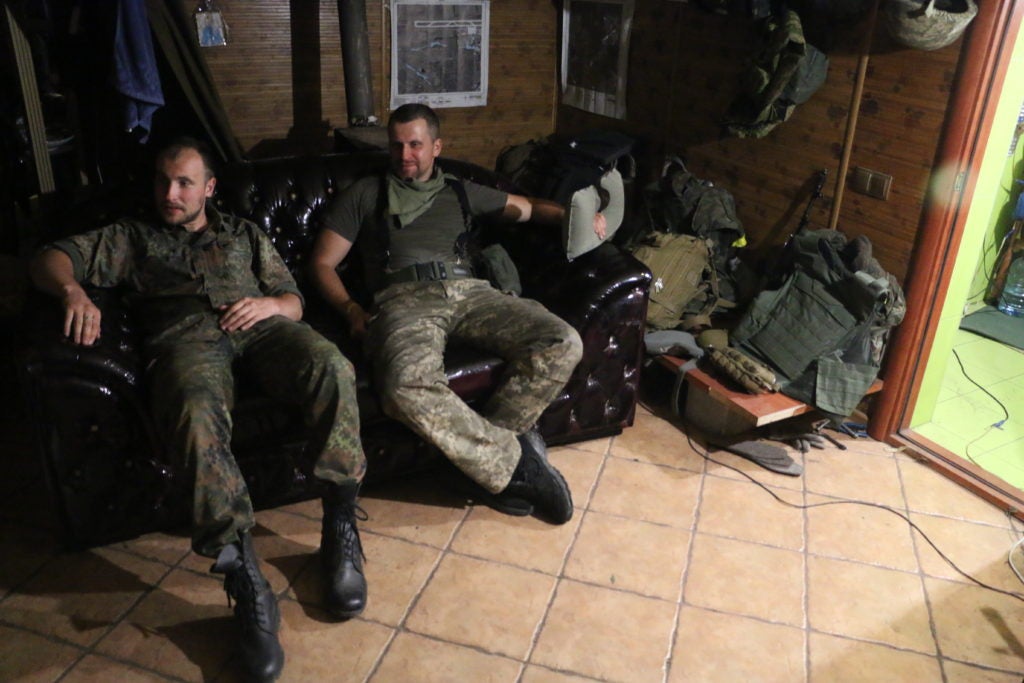
While on the front line, Ukrainian troops generally live in underground dugouts or in the basements of abandoned homes. Due to the constant threat of artillery and snipers, the only safe place is underground.
So the Ukrainians live a subterranean, Spartan existence in constant, close proximity to their comrades. Personal space is at a premium. Out of necessity, the soldiers’ bunks are often packed close together. Meals are often eaten at a common table.
Hygiene on the front lines is a constant challenge. Outdoor toilets are the norm, and regular showers can be hard to manage. In short, trench warfare is a dirty, dangerous business, and there’s no practical way to implement social distancing, or to maintain scrupulous hygiene, while sheltering from daily Russian missile and mortar attacks.
“[The coronavirus] has already paralyzed the economy and social life in the rear, and it can do the same thing with the organization of our military contingent in the Donbas,” Ponomarenko told The Daily Signal. “I believe it is only a matter of time before this virus infiltrates our combat forces. Reducing the virus’ influence is now one of the most important issues for Ukraine’s survival in the war.”
War in the Time of Coronavirus
Despite the coronavirus pandemic, fighting in the Donbas has not abated. A Ukrainian soldier was killed by a sniper on Monday, according to a military report. On Sunday, Ukraine’s armed forces recorded 13 enemy attacks. Two Ukrainian soldiers were wounded amid 15 attacks on Saturday.
“Russian forces continue to shell Ukrainian troops using mortars and anti-tank guided missiles,” said Mykola Bielieskov, research fellow at the National Institute for Strategic Studies, a Ukrainian think tank.
“The rate of [killed in action] and [missing in action] is the same as if there had been no COVID-19,” Bielieskov added, referring to the disease caused by the new coronavirus.
According to multiple military sources and civilian experts, Ukraine’s armed forces have about 40,000 personnel currently deployed to the eastern warzone. Those forces comprise some 10 army brigades, in addition to air defense units, aviation units, and support personnel.
Altogether, about 25,000 to 27,000 Ukrainian ground troops are in the Donbas. Of that number, about 17,000 to 19,000 are likely at front-line positions at any given time, according to estimates by civilian experts. The remainder is based in compounds safely distant from the effects of combat.
The front line is not uniformly defended and the Ukrainian military has focused its forces at relatively isolated strong points. This dispersion of forces could ultimately help prevent the mass spread of COVID-19, some experts say.
On the other hand, Ukrainian soldiers rotate in and out of front-line positions at regular intervals. For that reason, some experts and officials say that coronavirus transmission is more likely to occur behind the front lines at rear echelon bases where soldiers are more concentrated.
The Ukrainian military has put measures in place to prevent the coronavirus from spreading within its ranks. Mass formations and leaves have been canceled. Troops are measured for fevers while entering military facilities, and common areas are frequently disinfected.
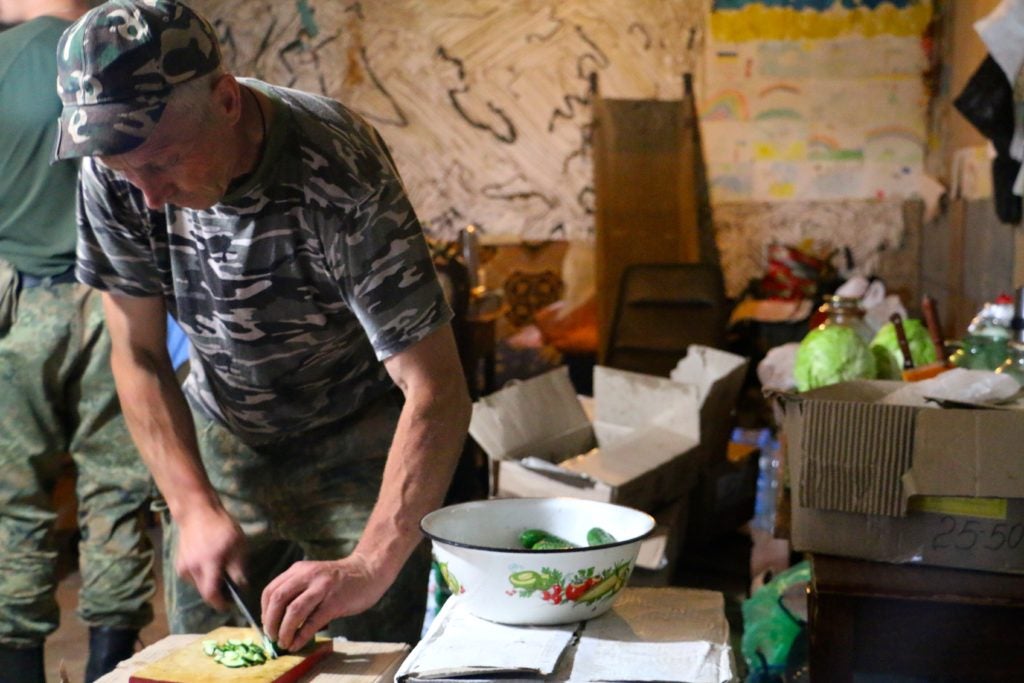
Most of these measures, however, will be hard to implement on the front lines. It’s much easier to maintain hygiene standards and practice social distancing at rear echelon bases, which are safely distant from the direct effects of combat.
The Ukrainian military reports that it has four mobile hospitals in the war zone with a total capacity of some 200 beds equipped to serve as coronavirus quarantine sites. A permanent military hospital in Mariupol has an additional 35 beds ready to accept coronavirus patients. In total, 24 respirators are available for troops in the war zone, according to military press releases.
As of this article’s publication on Monday, there have been no reported COVID-19 cases among deployed Ukrainian troops. However, some worry that the resources currently in place won’t be enough to deal with a widespread coronavirus outbreak within the ranks.
“Our efforts in the future highly depend on implementing the right prevention methods now,” said Oleksiy Bobovnikov, an officer in the Ukrainian army. “But we already have difficulties with the basics, such as surgical masks and test kits.”
Lockdown
Ukraine has so far been spared a widespread national outbreak of the coronavirus. As of Monday, Kyiv reported 480 confirmed COVID-19 cases nationwide, and 11 deaths from the disease. Yet, lawmakers are clearly bracing for the worst.
Ukraine is now completely closed to foreigners and all international air traffic has stopped. On March 22, Kyiv closed the checkpoints used by civilians to cross the front lines in the Donbas.
In the capital city of Kyiv, only grocery stores, pharmacies, banks, and gas stations remain open. Public transportation has shut down and the government has banned gatherings of more than 10. Not abiding by these rules is a crime, enforceable by fine or arrest.
On Wednesday, Ukraine declared a national emergency and extended its ongoing nationwide lockdown—which was supposed to end on April 3—until April 24. Now, many worry that an economic catastrophe is on the horizon.
Some 500,000 to 700,000 Ukrainians have already lost their jobs after two weeks of coronavirus restrictions, and some experts worry that number could increase fivefold in the coming weeks.
Experts predict that Ukraine’s gross domestic product may fall as much as 9%, primarily due to the effects of the coronavirus pandemic.
With Ukraine’s currency, the hryvnia, rapidly losing value against the dollar, prices on basic items are going up. For example, the price of buckwheat, a Ukrainian dietary staple, has already reportedly risen by more than 50% in some regions, according to the Antimonopoly Committee of Ukraine.
“At the moment the economy of Ukraine is almost dead,” Ukrainian army sniper Alexander Pochynok told The Daily Signal.
“If the quarantine goes on for another month it can destroy small- and medium-sized businesses in general, and this can cause a very serious situation,” Pochynok said. “At the moment, there is already a serious threat of food shortages for the military.”
Lawmakers on Thursday projected that Ukraine’s budget deficit was likely to increase fourfold this year, reaching about $7.2 billion. Accordingly, a wide range of government programs are now on the chopping block to help curtail an unrecoverable economic tailspin.
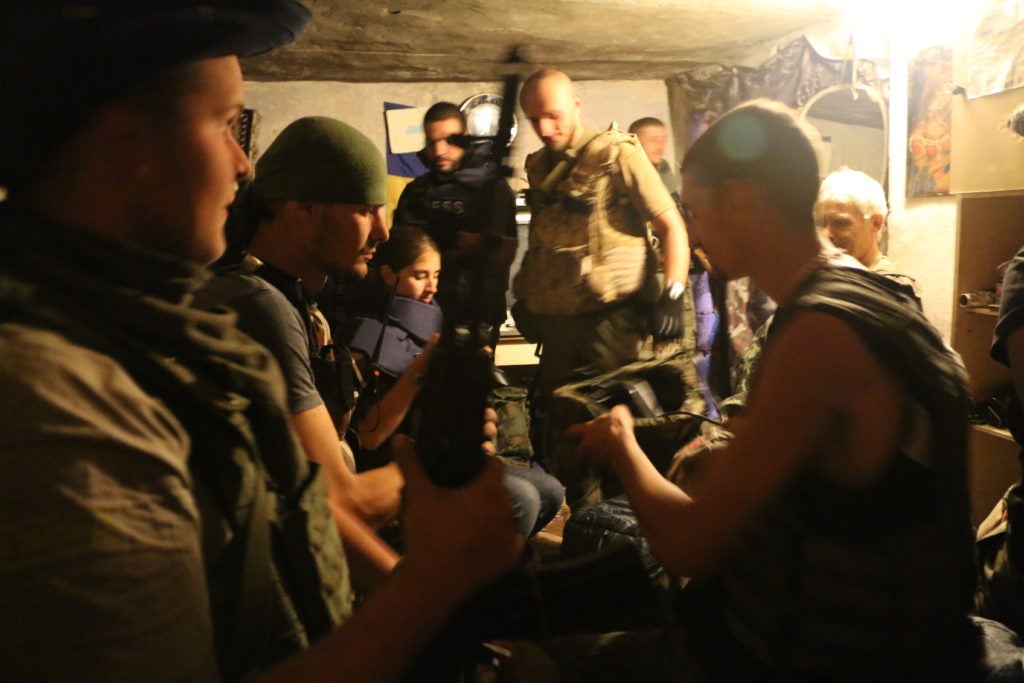
Ukraine’s 2020 government budget allocated roughly $5 billion to defense—about 3% of the country’s gross domestic product. So far, defense spending cuts aren’t on the table. But that could easily change, Bielieskov said.
“If the economy continues to deteriorate and COVID-19 isn’t brought under control, there will be more and more voices in government calling on Ukraine to slash its defense budget, given the soaring budget deficit, and direct more national resources to the COVID-19 fight,” Bielieskov said.
The war, as it currently exists, is a low-intensity, static conflict, characterized by intermittent, indirect-fire potshots. Ordinance expenditure and personnel costs are Kyiv’s main economic burdens when it comes to sustaining the war effort. For that reason, some say that even in the midst of a severe recession, Kyiv would still be able to fund its war effort.
“Even with all the current economic troubles, Ukraine has the resources and supplies in order to keep on fighting the low-intensity, frozen war in Donbas for a few more decades,” said Volodymyr Sheredeha, a Ukrainian veteran of the war in the Donbas.
According to Ponomarenko, Ukraine may be able to keep fighting in the Donbas during a recession. But the country’s long-term plans of building a military that can repel a full-blown Russian invasion may be in jeopardy.
“Ukraine’s economy is probably capable of holding the line in funding this current static, slow-paced, low-intensity war,” Ponomarenko said. “But the problem is that this slow war won’t stay this way forever.”
Quarantined War
More than half of the war’s nearly 14,000 combat-related deaths have occurred since the failed February 2015 cease-fire, known as Minsk II, went into effect. The war has also wounded more than 30,000 people and displaced about 1.5 million more from their homes.
While the fighting never ended, Minsk II effectively froze the conflict along its current boundaries.
For years, consequently, the war’s physical effects have remained largely quarantined to a buffer area on either side of no man’s land that extends only as far as the range of the weapons used.
Thus, despite the war, life has gone on pretty much as normal in most parts Ukraine distant from the war zone. In fact, after Ukraine’s pro-Western 2014 “Revolution of Dignity,” life has materially improved for many Ukrainians. That positive trend looks likely to end soon.
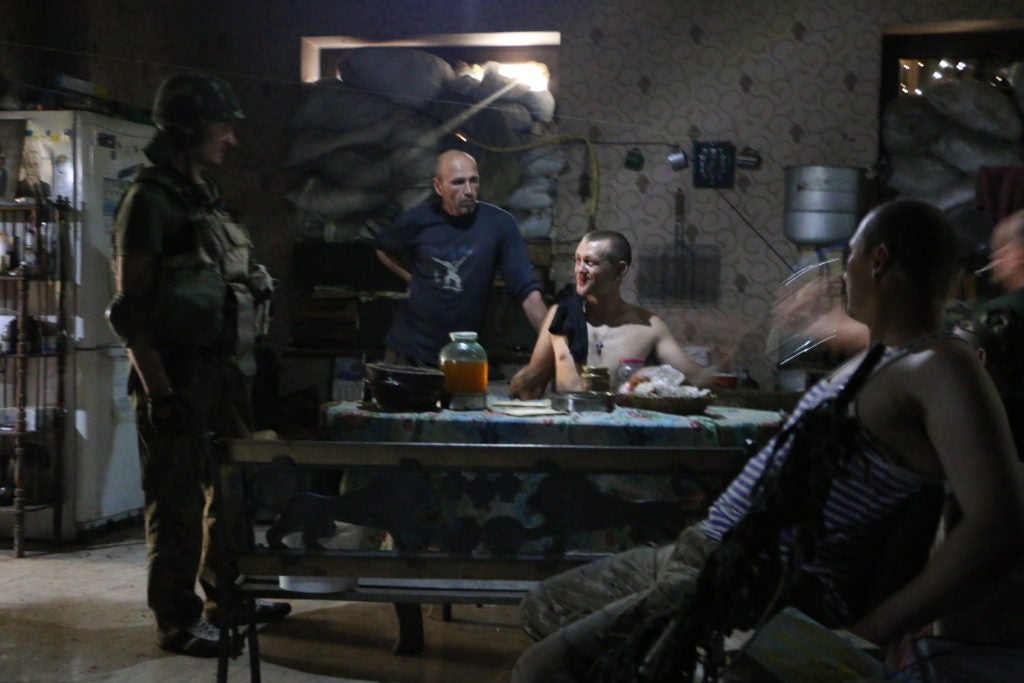
“People in Ukraine are so protected from Russian aggression that they’ve almost forgotten about the war,” said Bobovnikov, the Ukrainian military officer. “So I think an empty freezer will terrify them much more than Russian bombs.”
Ukraine’s war effort has always heavily depended on civilian volunteers, who fill in gaps when it comes to certain supply shortfalls, as well as in other ways such as with training medical personnel treating post-traumatic stress.
However, as Ukrainians increasingly focus on their own well-being as the economy implodes and the virus spreads, that constant source of civilian support for the war effort may consequently wane.
“In my honest opinion, everything will get worse soon,” said Dmytro Zolotukhin, an information warfare expert. “Clearly, the social and financial support for the military will suffer a tremendous decline.”
Side Effects
Ukrainian President Volodymyr Zelenskyy swept into office in 2019 on a perceived mandate to end the war. To that end, the Ukrainian leader has made several bold, and controversial, peace overtures to Moscow to jump-start peace talks.
Prior to the coronavirus pandemic, Ukraine’s economy had been steadily improving and the country’s democratic reforms had hit their stride. That gave Zelenskyy a stronger negotiating position vis-à-vis Russia than at any other time of the war, many experts say.
Now, however, with a recession imminent and a health crisis on the horizon, some in Ukraine now worry that Zelenskyy will be under pressure to make an unfavorable deal with Putin to end the war as soon as possible.
“We stand now with our back against the wall. After six years of extensive reforms and an all-out military buildup, we now end up having no choice but to bargain a less acceptable deal with the Kremlin,” said Ponomarenko, the defense reporter.
“A strong military and an economic miracle behind our back would have helped save us from the doomsday of the Minsk accords,” Ponomarenko added, referring to the war’s defunct cease-fire deal. “Now the recession that will follow the coronavirus crisis will only make things worse.”
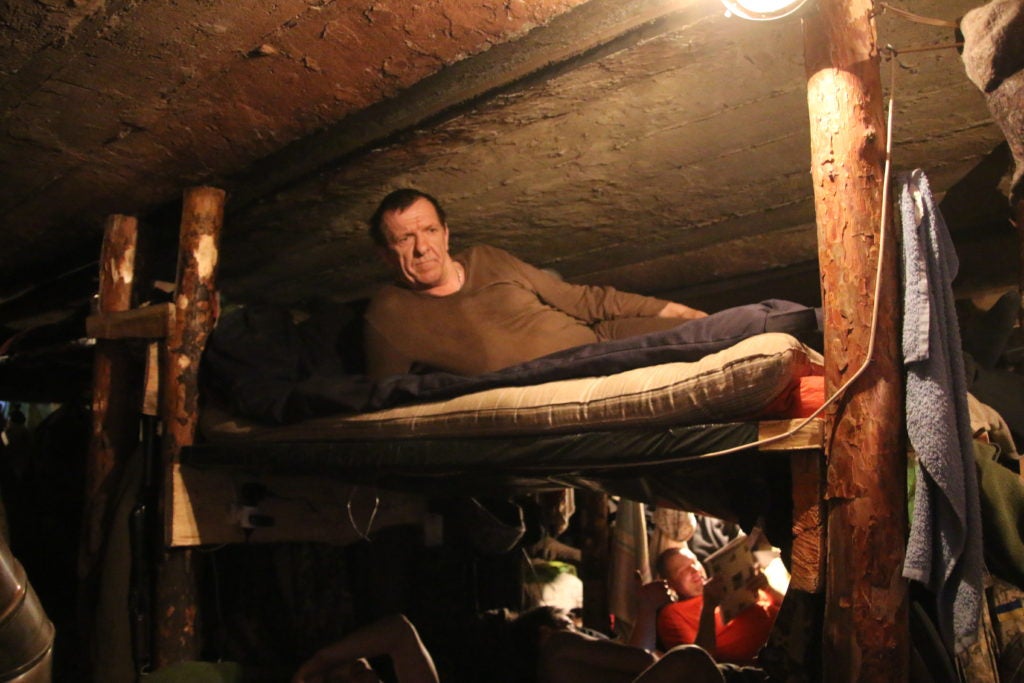
Russia’s client breakaway territories in the Donbas are totally dependent on Moscow for money and arms, and Russian regulars reportedly command and control the war effort, according to both U.S. and Ukrainian officials. Without Russia’s support, therefore, the so-called separatist war effort would end.
However, Russia is now dealing with its own coronavirus outbreak. Consequently, the Kremlin is incrementally implementing lockdown measures in Russia on par with what Ukraine has already done—including closing the country’s borders. Coupled with a sharp drop in global oil prices, the Russian economy is under pressure.
Bielieskov said the coronavirus pandemic could actually be to Ukraine’s favor, when it comes to ending the war, if Russia is forced to look for an off-ramp from the conflict in order to divert resources to its domestic COVID-19 crisis.
“The Russians are now preoccupied with COVID-19 and the dramatic drop in oil prices,” Bielieskov said. “It’ll be very difficult for the Kremlin to explain why Russia is preoccupied with fighting in Ukraine and not against COVID-19 … Kyiv could use this opportunity to try to get to a real frozen conflict with an effective cease-fire and a mutual disengagement of forces.”
































